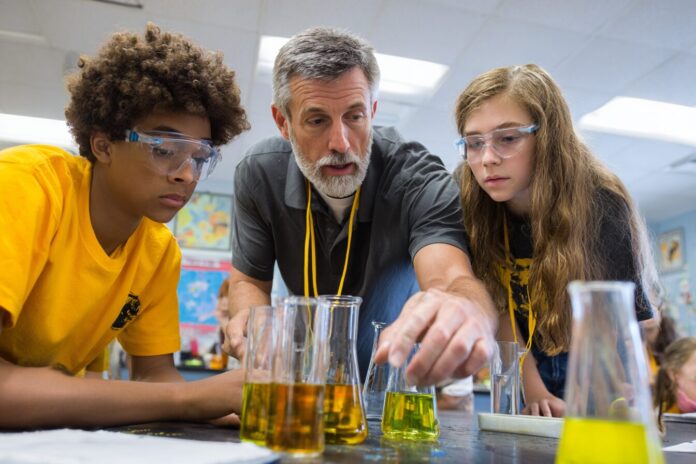Igniting Curiosity with Authentic NASA Science Experiences
Educators across Virginia are redefining STEM (Science, Technology, Engineering, and Mathematics) education by integrating hands-on NASA science into their classrooms. By connecting students with authentic NASA resources, these trailblazing teachers are fostering a deeper scientific understanding while equipping the next generation to tackle challenges in real-world scenarios.
Most importantly, these approaches motivate learners to explore complex topics with enthusiasm. Because hands-on experiences inspire creative thinking, students actively engage with the material, transforming theoretical concepts into practical insights. Moreover, integrating authentic science practices encourages students to ask probing questions and develop analytical skills essential for their future careers.
Transforming Teaching through Professional Development
Recent professional learning experiences have empowered educators to bring NASA’s cutting-edge science and technology directly to students. In June 2025, twenty-four teachers from eight Hampton Roads school districts participated in an intensive workshop at the National Institute of Aerospace (NIA) in Hampton, VA. This two-day session, led by NASA Langley Research Center experts and the NASA eClips team, provided comprehensive lesson plans, pacing guides, and classroom activities aligned with the Virginia Standards of Learning.
Therefore, teachers are now equipped with resources for seamless classroom integration. Because they have firsthand experience with NASA tools, these educators are able to foster an interactive learning environment, promote collaboration, and ignite a passion for inquiry among students. Their readiness not only elevates teaching standards but also encourages students to explore STEM careers with confidence. For further details, please visit NASA Science Resources.
Collaborative Ecosystems: Nurturing Lifelong STEM Engagement
Programs like the Coastal Virginia STEM Hub (COVA STEM) and NASA’s Science Activation initiative are playing a crucial role in establishing an ecosystem that supports STEM learning for everyone, from pre-K students to adult learners. By connecting educators, students, and community partners, these initiatives build lasting partnerships that transform the way science is taught.
Besides that, such collaborative ecosystems ensure that learning does not stop at the classroom door. Regularly, community events and cross-school projects allow students to bring their classroom insights into everyday observations, making the learning experience both continuous and holistic. This model promotes a learning culture where every discovery builds on the last, creating a chain of curiosity and innovation.
NASA eClips and GLOBE: Real-World Science in Action
Programs such as NASA eClips and GLOBE (Global Learning and Observations to Benefit the Environment) are delivering curriculum-aligned, hands-on science experiences that resonate with modern students. For example, third-grade teachers in Hampton City Schools have successfully implemented the Elementary GLOBE Earth Systems Module, enabling students to construct models that illustrate natural Earth processes.
Because these initiatives emphasize evidence-based learning, students can document their observations in science journals and draw data-driven conclusions. Furthermore, interactive resources, such as the engaging storybook “All About Earth: Our World on Stage,” introduce essential vocabulary and fundamental scientific principles in a manner that demystifies complex concepts. For more creative approaches, please refer to NASA eClips Integration in Hampton City Schools.
Bridging Space Technology with Modern Classrooms using NASA STELLA
Educators are not only teaching science concepts—they are also linking them with real NASA technology. Lynn Nichols, an instructional technology coach from Virginia, introduced students to STELLA, a 3D-printed handheld spectrometer that utilizes Arduino technologies and microcontroller programming. This modern instrument enables learners to conduct real-time environmental monitoring and analyze phenomena such as urban heat islands and the health of local vegetation.
Therefore, students directly apply skills from digital fabrication, electronics, and data science to authentic investigations. By integrating NASA technology into curricula, educational experiences move from textbook theories to hands-on research projects. Such practical engagement makes abstract scientific theories accessible and exciting for every student, as further detailed on NASA STELLA Initiative.
Building a Lasting Impact with Mentorship and Resources
Sustained change in science education requires ongoing mentorship and robust institutional support. Previous models, which limited NASA workshop participation to a single teacher per school, encountered challenges that hindered systemic transformation. Because individual enthusiasm alone can be insufficient to overcome structural barriers, NASA shifted its approach to include teams of teachers and administrators.
Most importantly, by involving entire school teams, greater adoption and integration of hands-on science were achieved. This strategy secured financial support and fostered a culture of continuous improvement, setting the stage for long-term, sustainable change. You can find additional insights on the role of mentorship in educational innovation at The Spaced-Out Classroom.
Looking Ahead: Scaling Innovation in Virginia and Beyond
Virginia’s STEM educators are part of a growing movement that is transforming standard K-12 education with NASA science. Their initiative not only benefits individual classrooms but also propels forward a broader movement toward integrating authentic space science in schools. As more institutions adopt these practices, an increasing number of students gain essential skills such as curiosity, critical thinking, and collaboration.
Therefore, the fusion of classroom content with real NASA missions creates an environment where students envision themselves as active contributors to discovery. Because this learning model is scalable, it provides a framework for other states and regions to replicate its success. With continuous innovation and dedicated mentorship, the future of STEM education looks brighter than ever.



